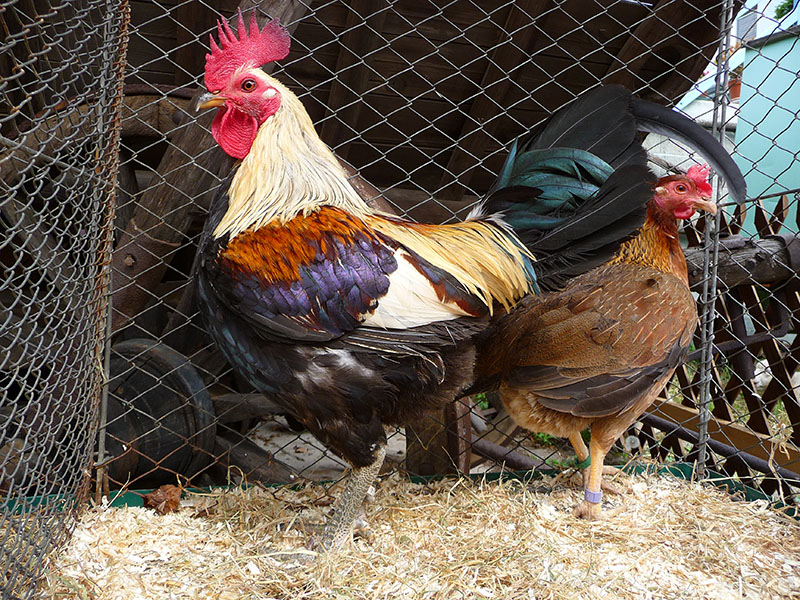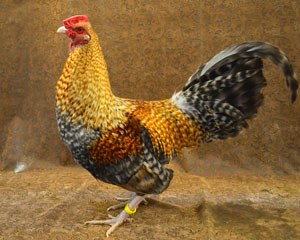Old English Game Chickens
 The Old English Game is descended from ancient cock fighting birds, brought to Great
Britain during the 1st century by the Romans. Cock fighting grew popular in Great
Britain and spread throughout all rungs of the social ladder. Cock fighting was banned
in 1849; however, many people still wanted a competition between chickens. This led
to poultry shows were chickens, like the Old English Game, were judged on qualities
other than fighting skills.
The Old English Game is descended from ancient cock fighting birds, brought to Great
Britain during the 1st century by the Romans. Cock fighting grew popular in Great
Britain and spread throughout all rungs of the social ladder. Cock fighting was banned
in 1849; however, many people still wanted a competition between chickens. This led
to poultry shows were chickens, like the Old English Game, were judged on qualities
other than fighting skills.
Characteristics
The Old English Game is an aggressive and noisy bird. It carries itself upright with the chest puffed out, making the bird look bigger. A small, tightly feathered bird, Old English Games are very hardy and extremely active. Old English have figured in the development of many other breeds. The mature cocks are known to be dubbed (have the comb and wattles removed) with a characteristic cut, however the practice of doing so is going out of fashion. Old English hens usually show broodiness but are so small and aggressive as well as defensive that they are not always the best choice as mothers. Old English are capable of considerable flight and may revert to a feral (wild) state in some areas. They are the domestic breed most like the wild jungle fowl in appearance.
Standard Weights
 Cock: 5 lbs
Cock: 5 lbs
Hen: 4 lbs
Cockerel: 4 lbs
Pullet: 3.5 lbs
Varieties
- Black Breasted Red
- Brown Red
- Golden Duckwing
- Silver Duckwing
- Red Pyle
- White
- Black
- Spangled
Skin Color
White.
Egg Shell Color
White or light tint.
Use
Old English Games are strictly an ornamental fowl.
References
Chicken Breeds and Varieties (A2880), John L. Skinner, University of Wisconsin-Madison
Lewis, Celia. "Breed Profiles: Old English Game (Carlisle and Oxford Types)." The Illustrated Guide to Chickens: How to Choose Them, How to Keep Them. New York: Skyhorse Pub., 2011. 124-25. Print.
"Old English Game Chicken." The Livestock Conservancy. The Livestock Conservancy, n.d. Web. 06 July 2015.
